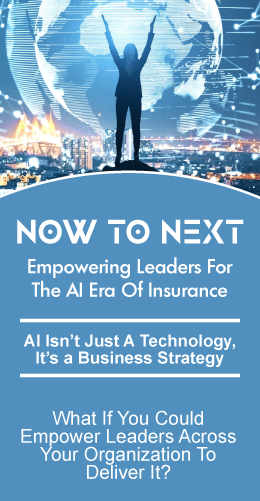The needs and expectations of your customers, particularly younger generations, are changing rapidly. To remain competitive, your company and others must adapt to these new realities. Here’s how.
Today’s customers expect personalized, intuitive, and seamless experiences that make their lives easier and add real value. But how can your company deliver on these expectations? Let’s take a journey with a young couple and explore the potential of digital-first experiences, and discover how you can adapt and thrive in this evolving landscape.
The Customer Journey: Meet Sarah and Mark
Sarah and Mark are a young couple who live busy lives. Sarah works as a commercial artist for a well-funded startup that provides exceptional benefits, while Mark is a studio musician who spends up to three months on the road. They recently moved into Mark’s mom’s home, located in an apricot and avocado orchard that she owns, to care for her and oversee the orchard operations. They are proud owners of several dogs, and Mark’s mom has several horses. In the coming years, they plan to have a child and start saving for their retirements and their child’s education.
Despite their busy schedules, Sarah and Mark are careful planners who want to ensure they’re protected and ready for anything. They understand the importance of life insurance and want to purchase a policy that provides peace of mind and financial security. However, they’re concerned that the insurance buying process may be complicated, and they don’t know where to start. They also worry that traditional insurance offerings may not adequately address their unique circumstances.
This is where digital-first customer engagement comes in. By using digital tools and data-driven insights, you can create personalized, end-to-end experiences that meet customers’ unique needs like Sarah and Mark. From the initial quote to the claims process, digital-first experiences can simplify the insurance buying process and provide customers with the support and guidance they need to make informed decisions. In the following sections, we’ll explore how you can leverage this approach to drive growth and differentiation.
The Digital First Imperative
Why Digital-First Customer Engagement is the Future of Life Insurance and Your Company, as an insurer, you know that the rise of digital-first customer engagement is a significant trend transforming the industry. Your customers, particularly younger generations, are increasingly turning to digital channels to research, purchase, and manage insurance products. They expect personalized, intuitive, seamless experiences that simplify their lives and provide real value.
To meet these expectations, your company needs to create a complete end-to-end experience that leverages data-driven insights to personalize every aspect of the customer journey. From marketing and lead generation to underwriting and claims processing, digital-first experiences can streamline the entire insurance process and provide your customers with the support and guidance they need to make informed decisions.
The benefits of digital-first customer engagement for your company are clear. By leveraging technology and data, you can:
- Improve customer acquisition and retention rates
- Increase operational efficiency and reduce costs
- Deliver personalized experiences that meet customers’ unique needs and preferences
- Enhance customer satisfaction and loyalty
- Gain a competitive edge in an increasingly crowded marketplace
But how can your company make digital-first customer engagement a reality?
Digital-First Design Framework: Putting the Customer at the Center
To create digital-first customer engagement experiences that truly resonate with your customers, your company needs to adopt a digital-first design framework. This framework involves taking a customer-centric approach and leveraging data, AI, and behavioral science to understand each customer’s unique needs and preferences deeply. It also involves mapping the customer journey and leveraging agile development methodologies to iterate and improve the customer experience.
The first step in a digital-first design framework is to take a customer-centric approach. Your company should gather data on your customers and use that data to gain insights into their needs and preferences. You can use data from various sources, such as customer interactions, social media, and third-party data providers, to build a comprehensive picture of your customers.
Once you clearly understand your customers’ needs and preferences, you can start to map the customer journey. This involves identifying your customers’ touchpoints, from initial awareness and consideration to purchase and ongoing engagement. By mapping the customer journey, you can identify opportunities to improve the customer experience and create more personalized interactions.
To create personalized experiences, you can leverage data, AI, and behavioral science. For example, you can use predictive analytics to anticipate customers’ needs and proactively offer relevant products and services. You can also use sentiment analysis to understand customers’ emotions and tailor your interactions accordingly.
Finally, you should adopt agile development methodologies to iterate and improve the customer experience over time. This involves developing and testing new features and experiences in small increments and using customer feedback to drive continuous improvement.
Data and System Requirements for Digital-First Customer Engagement
To deliver the level of personalization that your customers expect, your company needs to have a complete view of their needs and preferences across all touchpoints.
To achieve this, you must have a modern data architecture that enables you to collect and analyze data from multiple sources in real-time. This includes structured data from policy administration systems, unstructured data from social media and other sources, and data from third-party providers such as credit bureaus and healthcare providers.
You must also have a robust customer data platform (CDP) that can integrate data from multiple sources and provide a single, unified view of the customer. The CDP should be able to segment customers based on their needs and preferences and provide insights into customer behavior and engagement.
To deliver personalized experiences, you need to leverage AI and machine learning algorithms to analyze customer data and provide insights into their preferences and behaviors. This includes predictive analytics that anticipates customer needs and recommends relevant products and services.
Finally, you must have a modern technology infrastructure supporting digital-first experiences across all touchpoints. This includes web and mobile applications that give customers real-time access to policy information, claims processing, and other services.
Defining Priorities and Building the Business Case for Digital-First Customer Engagement
To successfully implement a digital-first customer engagement strategy, you must define clear priorities and build a compelling business case for investment.
Start by conducting a comprehensive analysis of your customer base and identifying the segments most likely to benefit from digital-first experiences. This includes understanding their unique needs, preferences, and preferred channels of engagement.
Next, assess your company’s internal technical and skill strengths and weaknesses. This includes evaluating your data and system architecture, as well as the capabilities of your IT and data science teams.
With this information, you can begin to prioritize your digital-first customer engagement initiatives based on their potential impact on customer satisfaction, revenue growth, and operational efficiency. You should also consider the potential risks and challenges of each initiative, such as data privacy and security concerns.
To build a compelling business case for investment, you need to articulate the value proposition of your digital-first customer engagement strategy. This includes highlighting the potential benefits of personalized experiences, such as increased customer satisfaction, loyalty, and revenue growth. You should also quantify the potential ROI of your digital-first initiatives, including the expected impact on customer acquisition and retention rates, operational efficiency, and revenue growth..
The Pillars of Digital-First Customer Engagement
Digital-first customer engagement requires a complete end-to-end experience that is personalized, intuitive, and streamlined. To create this kind of experience, your company must focus on the following pillars:
- Design thinking and customer-centric design: The first pillar of digital-first customer engagement is design thinking and customer-centric design. You have to put yourself in your customers’ shoes and think about the entire customer journey, from research and purchase to claims processing and customer service. By prioritizing the customer journey and understanding their unique needs and preferences, you can design a digital-first experience that delivers real value to your customers.
- Data and system requirements for personalized experiences: The second pillar of digital-first customer engagement is data and system requirements for personalized experiences. You must have access to high-quality data and the right systems to analyze it in real-time. This allows you to personalize every aspect of the customer journey, from marketing and lead generation to underwriting and claims processing.
- Mitigating the messy middle problem: The third pillar of digital-first customer engagement is mitigating the messy middle problem. The messy middle refers to the complex and often confusing part of the customer journey that falls between research and purchase. To succeed, you must simplify this process and provide personalized guidance to help customers make informed decisions.
- Behavioral science and addressing customer biases: The fourth pillar of digital-first customer engagement is behavioral science and addressing customer biases. By understanding the biases influencing customer decision-making, you can design digital-first experiences that nudge customers in the right direction.
- Agile development and the importance of continuous improvement: The fifth and final pillar of digital-first customer engagement is agile development and continuous improvement. Your company, marketing, and development teams must be agile and adaptable, constantly iterating the digital-first experiences to meet your customers’ evolving needs and expectations.
Best Practices for Building Digital-First Experiences
Creating a successful digital-first customer engagement platform requires a thoughtful and strategic approach. Here are some best practices that your company can follow to build a strong foundation and achieve success:
- Prioritize the customer journey and define requirements: To create a digital-first experience that meets the needs and expectations of your customers, you must start by prioritizing the customer journey. This means mapping out every touchpoint of the customer journey and identifying pain points and opportunities for improvement. Once you understand the customer journey, you can define requirements for your digital-first platform that align with your customers’ needs and preferences.
- Identify internal strengths and weaknesses to build a strong foundation: Before launching a digital-first platform, you must assess your internal strengths and weaknesses. This includes evaluating your technology infrastructure, data quality and availability, and talent and resources. By identifying potential roadblocks early on, you can build a strong foundation that supports your digital-first customer engagement efforts.
- Leverage external partners to fill knowledge gaps: Building a successful digital-first platform requires a wide range of expertise, from design and user experience to data analytics and technology. In some cases, partnering with external experts who can fill knowledge gaps and accelerate your digital-first efforts may be more efficient and effective. This can include partnering with data analytics firms, user experience design firms, or technology providers with relevant expertise.
- Establish a business case and ROI for digital-first investments: To secure the resources and support you need to build a successful digital-first platform, you need to establish a strong business case and ROI for your investments. This means quantifying the potential benefits of a digital-first platform, such as increased customer acquisition and retention rates, reduced costs, and improved customer satisfaction and loyalty. By demonstrating the potential ROI of your digital-first efforts, you can secure the resources and support you need to succeed.
Conclusion: Seizing the Opportunity for Digital-First Engagement
In today’s rapidly changing insurance landscape, digital-first customer engagement is no longer just an option. It’s a necessity. The rise of digital-first experiences is driven by a new generation of customers who demand personalized, intuitive, and seamless experiences that simplify their lives and provide real value.
By adopting a customer journey framework and focusing on the pillars of digital-first customer engagement, your company can deliver the kind of experiences that meet your customers’ evolving needs and expectations. These experiences can help you differentiate your brand and drive growth in an increasingly crowded marketplace.
To successfully adopt digital-first customer engagement, you must prioritize the customer journey, use data and technology to personalize every aspect of the experience, simplify the messy middle, address customer biases, and continuously improve the digital-first experience.
The call to action is clear: invest in digital-first customer engagement to meet the evolving needs of a new generation of insurance customers. Doing so can position your company for success in the digital age and build long-lasting relationships with your customers.
Let’s get started.
Mike Connor, CEO, SVIA
Your thoughts and comments are appreciated.








